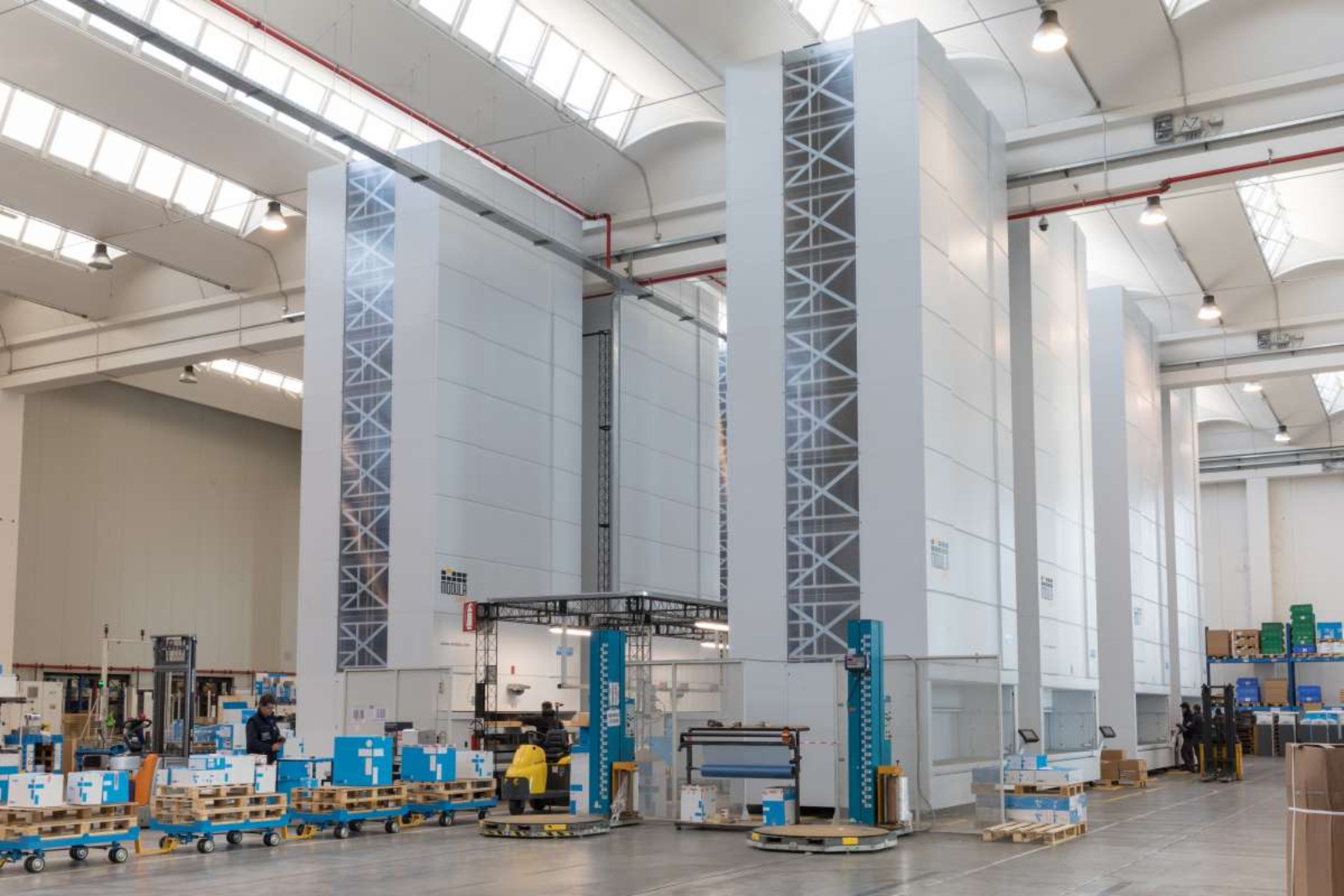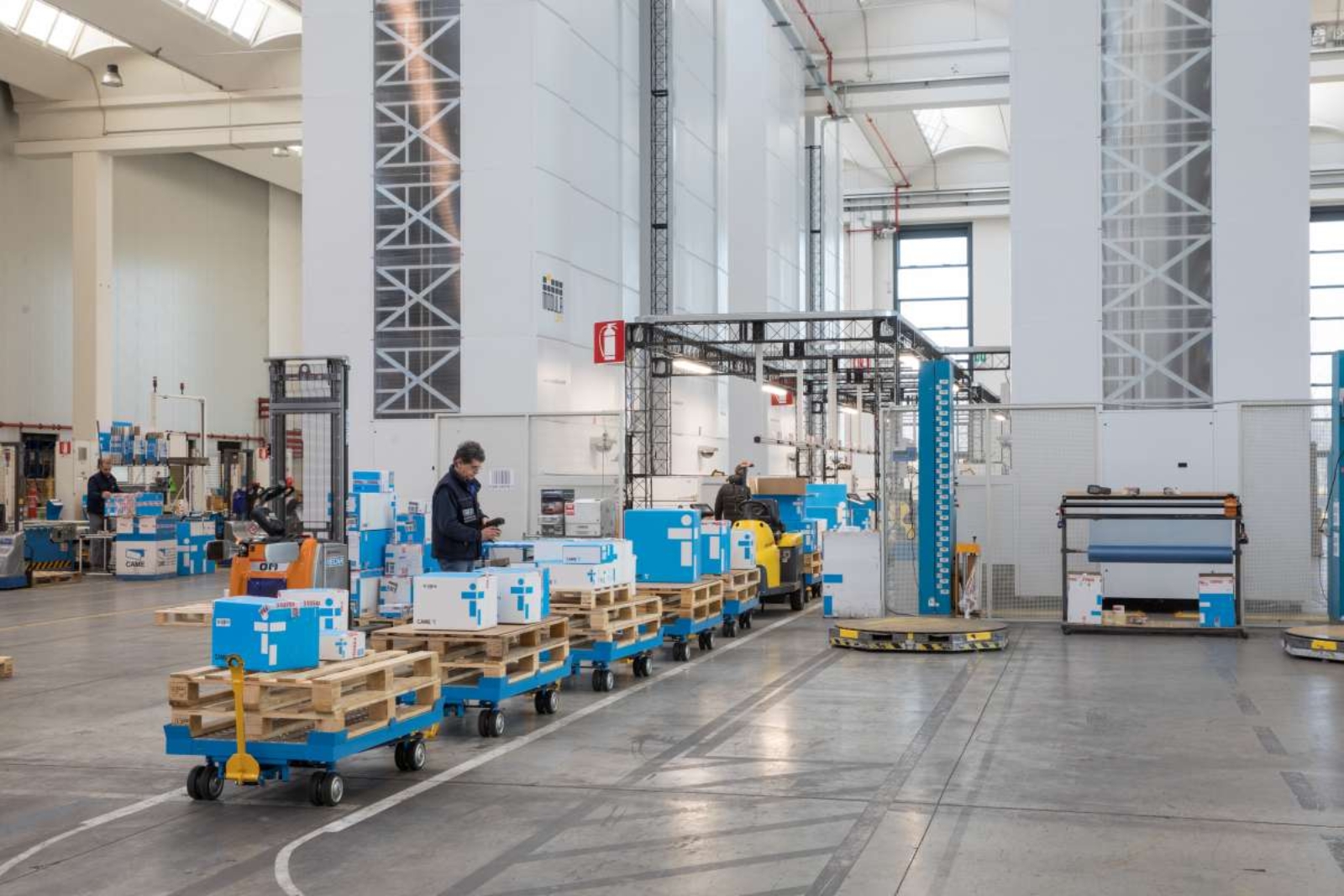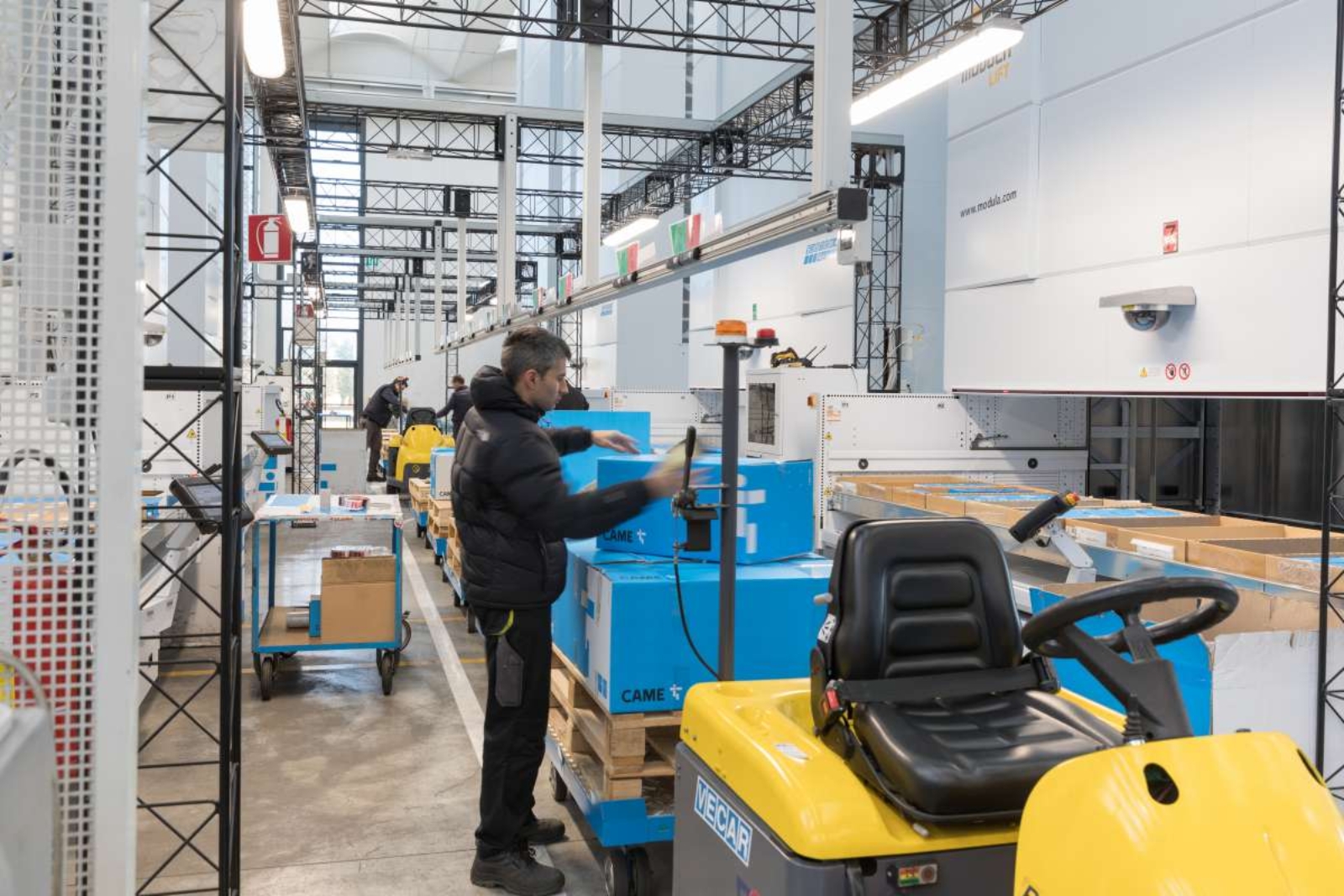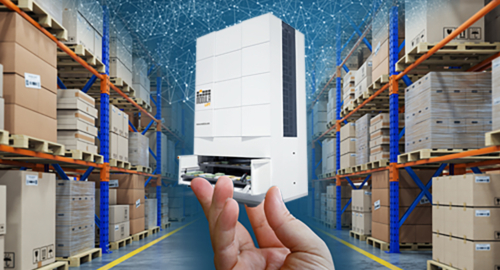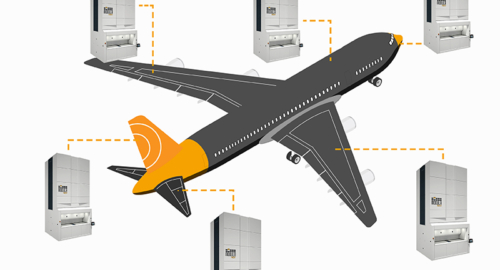Good warehouse management is based on multiple factors, but the most important by far is efficiency. Without a simplified and lean organization and production process, warehouse operations are affected and so are costs, personnel, and company performance.
In this article we will explain the critical factors involved in making a warehouse efficient, starting from the optimization of space through improvements in picking accuracy, productivity and even personnel satisfaction.
How to switch to an efficient warehouse: 5 key factors to take into consideration
If your warehouse cannot handle increased demand, sorting and delivery of orders, you could suffer substantial economic losses and undermine customer satisfaction, with the risk of losing customers.
Here are 5 tips that will help you improve the performance of your warehouse.
1) Optimize warehouse space
Do you know how many square meters it takes for a warehouse to keep up with the significant global growth of e-commerce? About 300 million square meters, a US report from 2021 reveals.
Of course, we all know how expensive it is to acquire new space and move to a larger warehouse. However, there is another solution: companies can optimize the space that is already available. How so?
A little hint: think vertically.
It is not the size of the warehouse that matters, but how space and resources are used.
To optimize space and therefore increase storage capacity, start with these 4 steps:
- Identify the space that is not used in full.
- Store items according to their size.
- Reduce the width of the aisles between shelving racks.
- Remove obsolete inventory.
With a strategic layout, you can avoid cramped spaces, bottlenecks, and inefficient storage.
Modula automatic vertical storage systems can help in this: fully automated vertical storage systems that have a limited footprint because they use the available space up to the ceiling.
Here’s how vertical storage systems can optimize warehouse space:
- They are designed to optimize the space between one tray and the next, thus maximizing overall storage space.
- Trays are designed to accommodate heavy loads with no need for hazardous physical work.
- Trays can be organized by item type/size. Their configuration is not fixed and can be adapted to different sizes and quantities.
- Vertical storage systems have different types of bays which meet various operational and space needs. Internal bays are best for applications with limited space, while external bays can be useful when integrated with anthropomorphic robots or lift devices.
The best part? Modula storage systems can reduce your footprint by up to 90%. The height can be changed and adjusted, by adding or removing modules, thanks to the modular design of the machines. Should they need to be moved elsewhere, even to another location, Modula storage systems can be quickly adapted to the new height requirements.
2) Improve the accuracy of warehouse operations
Accuracy is paramount in all operations, but some of them really require special attention because if done hastily they can lead to very serious consequences, even the loss of turnover.
One example certainly involves inventory, which if not managed correctly can lead to production and shipping delays, misplaced items, prolonged downtime and, ultimately, economic losses. If your theoretical inventory does not match your physical inventory, backorders could increase and production could be halted to the detriment of the company’s reputation.
Here are some tips to improve accuracy in warehouse operations:
- Implement a warehouse inventory management system that enables you to work quickly and easily but at the same time accurately.
- Integrate robots and other automated storage systems (for example Autonomous Mobile Robots, also called AMR).
- Establish standard picking routes.
- Train employees to apply thorough inventory control procedures.
- Investigate and determine the factors that lead to an out-of-stock situation.
- Automate the reporting process.
- Use wireless RFIDs.
3) Increase personnel productivity
Personnel productivity plays a key role in business profitability. That is why it is essential to modernize methods and procedures as well as to improve both processes and working environments.
Warehouse automation can eliminate repetitive tasks by giving personnel the opportunity to focus on more “useful” tasks.
How to improve personnel productivity in a warehouse? Here are 4 simple tips:
- Invest in high-quality training.
- Provide the workforce with financial incentives.
- Provide the tools and equipment needed.
- Ask for ongoing feedback from personnel and consequently implement changes as needed.
Modula automated storage systems are the right solution to dramatically increase productivity and provide a more efficient work environment.
Applying the “goods to person” method, vertical and horizontal automatic storage systems deliver the items directly to the operator, more precisely to a fixed location where all picking operations take place.
Thanks to the visual picking aids, the operator quickly understands which and how many items to pick. This eliminates human error, improving accuracy up to 99%.
4) Personnel satisfaction and safety
According to Eurostatdata, in 2020 2.4% of workers in Europe reported at least one accident at work in the previous 12 months.
Whether it’s a fall, being hit by an object, or being trapped in equipment, they are all potential injuries that could have serious consequences. Physical safety plays a key role in efficient warehouse management.
What to do then? In addition to the classic recommendations such as employing only certified and competent workers, carrying out periodic maintenance of machinery, providing appropriate personal protective equipment (PPE), and organizing periodic training and safety courses, one of the most important aspects also concerns the type of solutions chosen for the warehouse. For example, vertical and horizontal automatic storage systems are designed to reduce unnecessary walking, bending, and stretching that characterize the work of operators in warehouses based on traditional racking solutions. In fact, all picking operations can be performed from a fixed position and this greatly reduces the risk of injury, offering personnel maximum safety even in rather demanding work environments.
In addition, dissatisfaction at work is another factor that must never be underestimated as it causes not only low morale, but also loss of motivation, lack of interest, frustration, low productivity, absences, and increased job rotation. Worker satisfaction is one of the keys to success for an efficient warehouse. This is all the more true when we consider the current labor shortage.
How can a satisfactory work environment be ensured though? Definitely, by simplifying the boring aspects of operations, eliminating some of the monotonous activities that lack real added value, reducing confusion and thus stress levels.
Satisfied personnel are those in safe work environments. A happy worker is a more productive worker.
5) Save on inventory costs
It is well known that managing a warehouse requires considerable resources (storage, utilities, rent, labor, equipment, etc.). For this reason, to achieve efficiency in your warehouse you need to find a way to reduce costs without affecting the quality of the service offered.
Cutting costs without compromising on quality or productivity seems like an unattainable dream for most companies.
Whether you are looking for immediate or long-term solutions, here are some ways to reduce inventory costs:
- Ensure that all available space is optimized by reorganizing the warehouse.
- Invest in state-of-the-art automation and/or equipment.
- Give the highest priority to the scheduled maintenance of the equipment to prevent accidents.
- Use energy-saving lighting such as LEDs.
- Cultivate employee loyalty rather than trying to recruit new ones who need training.
The last point to add to the list is to use automation which, although initially it may seem an additional cost, actually enables cost optimization in the long run. There are also various solutions to automate a warehouse: the Modula automatic storage systems that we have already mentioned have a relatively low repayment period: from 6 to 18 months.
Efficient warehouse solutions: A look at Modula case studies
Modula vertical and horizontal automatic storage systems are suitable for all business sectors. They improve warehouse performance, efficiency and safety by optimizing space and reducing inventory errors regardless of the product sector or range.
Let’s take a look at two examples of Modula systems operating in completely different companies.
1) Lyreco
Lyreco is a leading European provider of office supplies and work environment products in the B2B market.
Former warehouse issues:
- There was no space left for storage. In fact, in the last 2 years the company had doubled the goods stored in the warehouse at the expense of the space for picking stations.
- Picking stations with poor ergonomics for personnel.
Benefits achieved thanks to the installation of Modula Lift storage systems:
- Goods are now stored in an orderly manner, freeing up space on the floor and taking advantage of all the vertical space.
- Reduction of picking errors, which has almost completely eliminated order delays.
- Operators have noticed improvements in their working conditions in terms of both safety and speed. Modula Lifts enable faster work without affecting safety and this leads to greater productivity.
- No downtime or delays in order fulfillment following the installation and integration of the Modula Lift storage systems with Lyreco’s existing picking system.
2) Digbits
Digbits is a supplier of spare parts for excavators of all sizes: from 0.5 t micro excavators, to mini excavators and midi excavators, up to 80 t excavators.
Issues:
- Even in this case the main problem was caused by the lack of space, due to both the quantity and the size of the pieces stored.
- It was necessary to increase picking speed to keep up with customer demands.
Benefits achieved thanks to the installation of Modula Lift storage systems for both heavy and light items:
- It was no longer necessary to build an additional floor to store all components because thanks to the Modula solutions vertical space can be used and there is no need to rely on the space at ground level.
- All picking operations are now significantly faster and more efficient. This is because the different items are all in one place, meaning inside the Modula storage systems, so that operators do not have to go around the warehouse looking for pieces.
Moreover, by adding some accessories, such as the LED bar, the operator is shown precisely where the material is located inside the tray, which simplifies and speeds up his work.
How can a warehouse be managed efficiently then?
An efficient warehouse is characterized by optimized space, a happy and productive workforce, accurately managed inventory, and cost reduction obtained without compromising on quality. The secret to attaining all of this? Automated storage solutions, just like those designed and manufactured by Modula.
Want to know more?

